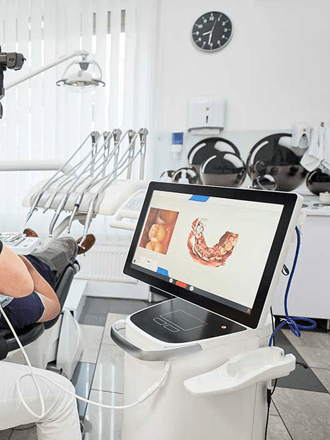3D Printing & Digital Impressions: The Future of Dental Restorations


Dentistry is constantly changing, with modern technologies revolutionizing the way diagnosis and treatment are performed. In this context, 3D printing and digital impressions are emerging as two core components shaping the future of dental restorations. Their integration has led to a fundamental transformation in how dental prosthetics are designed and fabricated, offering superior accuracy, enhanced patient comfort, and a highly efficient workflow. By transitioning from traditional methods to digital solutions, dental clinics are taking giant leaps toward a new, high-quality, personalized treatment experience.
The traditional methods for taking dental impressions have long been a difficult and uncomfortable process for patients. They required the use of messy impression materials, which frequently caused patients to feel nauseous or gag. The accuracy was often dependent on the technician’s skill, which could lead to incorrect impressions and poorly fitting dental restorations.
Today, this method has been replaced by intraoral scanners, which are far more accurate and efficient. Using these scanners, accurate digital images of a patient's teeth and mouth are captured in a matter of seconds. These images are then converted into a 3D model on a computer screen, giving the dentist the ability to zoom in, rotate, and analyze the model in great detail. This process not only streamlines the workflow but also allows the digital model to be shared with the lab instantly, significantly reducing waiting times.
The digital revolution is complete with the integration of 3D printing technology, which transforms digital designs into physical objects. After creating a digital model, dentists and lab technicians can modify and customize it with precision. Advanced design software is used to create dental restorations, including crowns, bridges, dentures, surgical guides, and orthodontic appliances. The designs are then sent to a 3D printer that uses biocompatible materials to fabricate the restorations layer by layer with micron-level accuracy. This extreme precision ensures that the final restorations match the patient’s teeth exactly, reducing the need for repeated manual adjustments. This is just one example of the innovative services available at dental care clinics today.
The combination of digital impressions and 3D printing provides a variety of advantages that are transforming dentistry. First, these technologies greatly improve the accuracy and quality of restorations, reducing the margin of error and ensuring a perfect fit. Second, they drastically speed up the workflow, allowing restorations to be completed in a matter of days—or even hours—instead of weeks. Third, they contribute to greater patient comfort by reducing the need for uncomfortable impression materials and the number of visits to the dental center. These technologies are often a standard offering at premier Jumeirah dental clinics.
Furthermore, current developments point toward a promising future for these technologies. As printers and materials become more affordable, they will be accessible to smaller clinics. We can also expect new, advanced materials to emerge that will enable the creation of more durable, aesthetically pleasing restorations. In the near future, dentists may be able to perform digital scans, design treatments, and print dental restorations in a single session using CAD/CAM systems. This integration will open new possibilities for immediate treatment and improve dentistry's ability to provide personalized, comprehensive solutions. It confirms that 3D printing and digital impressions are not just technologies but the foundation of the future of dental hospitals and modern dentistry.